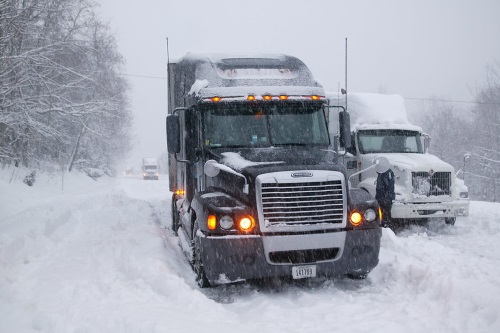In a five-page letter submitted to the U.S. Department of Transportation on February 10, the American Association of State Highway and Transportation Officials provided a range of policy recommendations to help craft a National Freight Strategic Plan or NFSP.
[Above photo by VDOT.]
“AASHTO believes that the safe and efficient movement of freight by air, highways, rail, and water is essential to a successful U.S. economy,” the group said in its letter.

“State DOTs strive to deliver the most effective and efficient transportation network as they continue to pursue investments that enhance the multimodal freight system,” the group said. “We are committed to working with USDOT in developing a national vision that informs infrastructure planning and supports future freight efficiencies.”
Key points highlighted in that letter include:
- The timely reauthorization of a long-term federal surface transportation bill as “cash shortfalls” are expected to interfere with the ability of state departments of transportation to effectively plan and implement freight projects. That also includes addressing the rising backlog for transportation infrastructure, which currently tops $786 billion for highways and bridges and $116 billion for transit, according to USDOT data.
- Increasing overall transportation funding. “According to the Congressional Budget Office, in order to simply maintain the current Highway Trust Fund (HTF) spending levels … in the Fixing America’s Surface Transportation or FAST Act, Congress will need to identify $100 billion in additional revenues for a six-year bill through 2026,” AASHTO said. “At the same time, the purchasing power of HTF revenues has declined substantially mainly due to the flat, per-gallon motor fuel taxes that have not been adjusted since 1993, losing over half of its value in the last 26 years. The lack of sustainable revenue solutions is a key challenge for state DOTs as they work to preserve and maintain their existing critical freight networks.”
- Maintaining and maximizing the current formula-based funding process that provides money directly to states though the existing programs rather than looking at new discretionary grant programs.
- To further enhance the effectiveness of state DOTs, AASHTO recommends giving them “increased flexibility” to transfer funds between various federal transportation programs, which will better enable states to target their scarce resources into the most beneficial freight programs and projects.
- To continue improving the National Environmental Policy Act or NEPA review process for transportation projects, while also making the NEPA process work more efficiently in harmony with other federal requirements – all the while carefully and responsibly delivering “optimal environmental outcomes.”
- Eliminate the 2 percent rule so states can spend funds on any National Highway Freight Network route, including critical urban and rural freight corridors alike.
- Expand Primary Highway Freight System definitions to include all interstate system roadways regardless of how much freight funding a state receives. “Given that the interstate system is just that—a system—a fragmented designation of the interstate system is not appropriate to addressing freight transportation and goods movement,” AASHTO said. “Freight program eligibility should include all Interstate miles by default.”
- Add eligibility to use funds on any portion of a state’s multimodal freight network as defined in a state’s freight plan.
“The use of the nation’s transportation system for freight is increasing, and with it the need for integrated solutions to better move freight throughout the country,” AASHTO stressed in its letter. “Ensuring stable and sustainable funding will safeguard uninterrupted investment in our freight transportation infrastructure to secure our nation’s key economic platform.”



